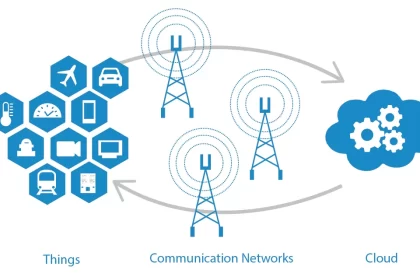Macular Degeneration is a serious concern among older adults worldwide. It is a progressive eye disorder that affects a person’s central vision. Age–related macular degeneration (AMD) though unique in many ways, is prototypical of a disease of inflammed aging (Inflammaging). The most common cause of the disease is immune aging, that is age–related dysfunction of the immune system.
Aviceda Theraptics is a late clinical–stage biotechnology company that develops groundbreaking treatments to halt vision loss in AMD patients progressing towards blindness and potentially restores vision in patients who have lost it. Michael Tolentino, MD and Mohamed Genead, MD of Aviceda Therapeutics were with The CEO Views team to walk us through the incredible journey of the company.
Inspiration Behind Inception
Binding sialic acid SAMP (self–associated molecular patterns) by immune checkpoint receptors called Siglecs, has been a significant biological discovery to deactivate immune cells. Siglec–SAMP interactions are essential for balancing the immune system by preventing damage of healthy self–tissue.
The elucidation of this natural mechanism to resolve inflammation allowed Michael Tolentino to conceptualize a sialic acid-SAMP mimetic therapeutic that could resolve inflammation by reengaging the natural immune brakes. It was 2015 when Chris Scott, a scientific co–founder of Aviceda invented a nanoparticle decorated with disialic acid that therapeutically reversed a severe inflammatory condition called sepsis. This invention enabled the development of a class of sialic acid SAMP mimicking nanoparticles that could be used to treat any inflammatory diseases.
Recognizing the potential of this mechanism, Michael Tolentino came together with Mohamed Genead, a retinal specialist turned Pharma executive and Derek Kunimoto, a Harvard educated retinal surgeon and Rhodes Scholar to lead the foundation of Aviceda.
Journey to Success
The company began in stealth mode by combining the nano- technology with the newly developed automated glycan synthesis and screening technology to develop the proprietary high affinity ligands of Siglecs (HALOS) platform that synthesizes high affinity Siglec binding glycans that can turn off specific inflammatory pathways.
In a few years, Aviceda made significant breakthroughs in the field and solidified its position as a clinical stage biotech company addressing a major retinal disease. The team at Major Trends and Developments Aviceda is currently laser focused on clinically developing the treatment of AMD/GA and running a pivotal Phase II/III trial. Apart from that, Aviceda is on the precipice of developing other glycomimetic nanoparticles to treat other disease of inflammation.
Aviceda’s Technology Platform HALOSTM
The diseases of inflammaging are treated by resolving inflammation. While diseases like cancer or infection need to activate targeted inflammation. Aviceda’s Technology Plat-Differentiation Factor form HALOS produces sugar (Sialic Acid) decorated nanoparticle therapeutics that can selectively resolve inflammation or enhance inflammation. It can also design and create synthetic sugar structures that bind SIGLECS with higher affinity than what is found in nature.
Aviceda is helmed as the pioneers in glycotherapeutics and the only company using sugars structures to modulate the glycoimmune axis.
Major Areas of Clinical Focus
Dry macular degeneration with geographic atrophy (AMD/– GA), a prototypical disease of inflammaging, inflammation, and neural degeneration has been the initial clinical focus of Aviceda. They invented AVD–104, a first generation, first in class sialic acid mimetic immune resolving nanoparticle therapeutic that restores para inflammatory homeostatic response, resolves overt inflammation and restores the neuroprotective healing function of resident microglial cells.
However, AVD–104 or its next generation can be instrumental in addressing other prototypical diseases of inflammaging such as dementia, diabetic complications, cardiovascular diseases, chronic kidney disease, anemia and cancer. It can also address pure inflammatory diseases such as arthritis, colitis, nephritis, lupus, and sarcoid as well as diseases that require neuroprotection such as Alzheimer’s, Parkinson’s and spinal cord injury.
Navigating Challenges
The field of glycochemistry and glycobiology are still in their embryonic stages and have lacked the CMC (Chemistry, manufacturing and controls) required for drug manufacturing. For Aviceda, the challenge was not only about innovating a new class of glycomimetic drug but also about innovating the CMC of this class of drug.
To address the hurdle, they had to return to the basics of glycochemistry, develop scalable manufacturing processes and identify new technology to produce in large scale and in GMP fashion a novel human therapeutic. Aviceda ensures that they meet any challenge with an inventive mind and out of the box thinking.
Major Trends and Developments
Use of cytokine or protein depletion strategies has been an emerging trend in the inflammatory therapeutic space. But this strategy comes with many side effects and in the eye some of these side effects are blinding. Many other inflammatory conditions are treated using an antibody that targets a cytokine. This only treats the symptom but not the underlying condition. Aviceda takes a different approach by resolving inflammation rather than inhibiting it.
Differentiation Factor
Aviceda is helmed as the pioneers in glycotherapeutics and the only company using sialic acid sugar structures to modulate the glycoimmune axis. This is what sets the company apart from other biotech companies in the market.
Aviceda’s main competitive advantage is their intellectual property and brain trust. They collected a board of scientific advisors who are all pioneers in the fields of glycobiology, glycoimmunology, glycoimmunooncology and glycochemistry. They have invented all aspects of the proprietary HALOS platform and have built a rather wide moat around the field of glycomimetic immune modulation.
Future Vision
The fields of glycobiology and glycochemistry are still under developed but have begun to take their rightful place in the drug discovery and development field. The future of the biotech pharma industry holds enormous opportunities for using sugars in regulating many disease processes. Because, this biology has been ignored for decades by drug developers and academia.
Aviceda through intellectual property, collaboration, and willingness to innovate have literally monopolized the burgeoning field of glycoimmune therapeutics. This intellectual and scientific monopoly positions Aviceda to thrive into the far future.










